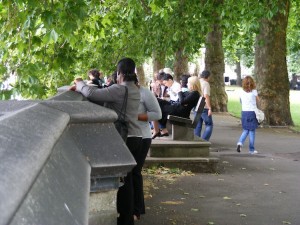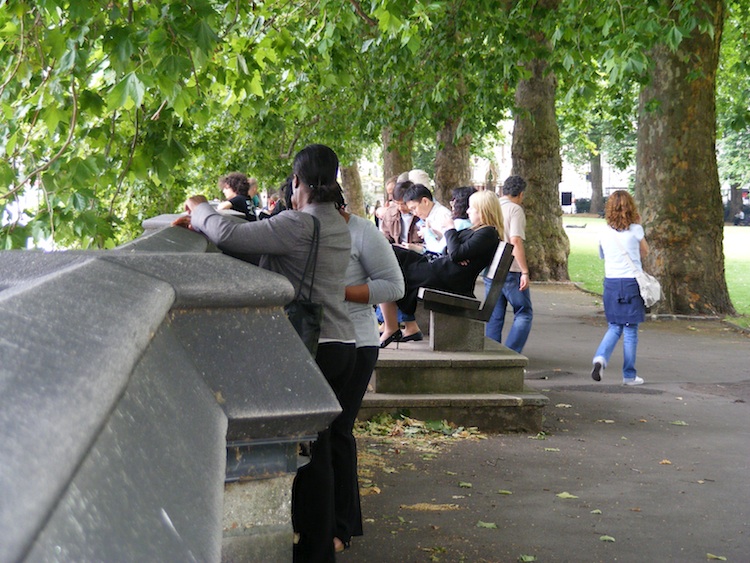 Today is the second installation in a month-long Wednesday series on The Phoenix Tree and Shade Master Plan. Last week I talked about the concept of the Urban Forest and why it’s important. Today I’m going to try to address this notion quoted in the Master Plan:
Today is the second installation in a month-long Wednesday series on The Phoenix Tree and Shade Master Plan. Last week I talked about the concept of the Urban Forest and why it’s important. Today I’m going to try to address this notion quoted in the Master Plan:
“(The) General public has a limited understanding of the importance of trees.”
This may be why most people have no idea or don’t care that our Phoenix urban forest is being destroyed slowly. Planting trees is not in the forefront of people’s minds when it comes to improving livability.
Here’s why trees are important: they are “solution multipliers”. A solution multiplier is a solution that addresses several problems at once. This is the beauty of solutions that come from nature, they are simple but abundant and powerful. According to the Master Plan, “Trees are a perfect example of a solution multiplier because when planted and maintained correctly, they can provide many economic, environmental, and social
benefits.”
Here are some of the benefits of a healthy urban forest:
1. provides a cooling effect that reduces energy costs (think heat island effect!)
2. improves air quality
3. strengthens quality of place and the local economy
4. reduces storm water runoff
5. improves social connections
6. promotes smart growth and compact development
7. creates walkable communities
Looks like planting trees would solve many of the major problems effecting Phoenix that I’ve talked about on this blog – heat island, placemaking, public space, walkability…Who knew this one simple solution of planting the right trees in the right places could be so unimaginably effective in improving our city? Plus, did you know that every $1 invested in planting a tree yields $2.23 back to the city? So it’s no surprise that according to the Master Plan, “the health of the urban forest is closely linked to the economic health of the city“.
What can we do to stop the depletion of our urban forest like has happened in other cities like Atlanta? In Atlanta, the urban forest canopy decreased by 48% from 1974 to 1996. One of the measurable problems this created is that it increased storm water by 33%, something the city had to deal with by building $1.18 Million in storm water retention facilities. This is just an example of the profound long term environmental (not to mention social) impact that results from neglecting the health of the urban forest. Let’s not let this happen in Phoenix!
Next week, I’ll discuss the ways the Tree and Shade Master Plan proposes to implement a healthy urban forest initiative.
Photo Credit: A city park in London. Photo by Taz Loomans




















Excellent point! I’ve always thought that areas with trees make for a much more welcoming environment for pedestrians, but I had no idea the urban forest had so many other benefits.
Matthew, thanks for your comment. I’m thinking most people are in the same boat, they don’t know about the other benefits. I personally learned quite a bit just writing the post on what a profound impact a healthy urban forest has.
Thanks for highlighting the benefits of a healthy urban forest. For me, trees are also more pleasing to the eye…
Thanks, great blog.
Tonya, thanks for your comment and thanks to the PCA for being advocates of a thriving urban forest.
[…] on The Phoenix Tree and Shade Master Plan. Part I was all about what an urban forest is and Part II, last Wednesday, was about the multiple benefits of a healthy urban forest. Today I’m going […]
[…] I discussed in a previous post, a healthy urban forest is essential to the well-being of our city. It is, indeed, essential for […]
Awesome! I love this. So well said.
Thanks Dan!